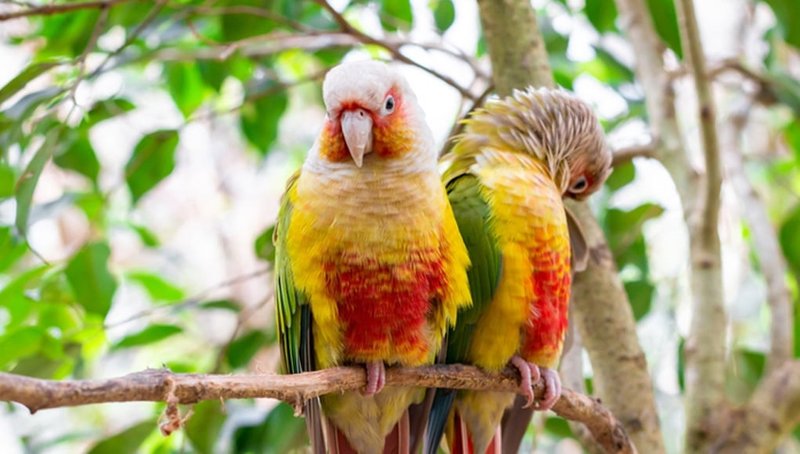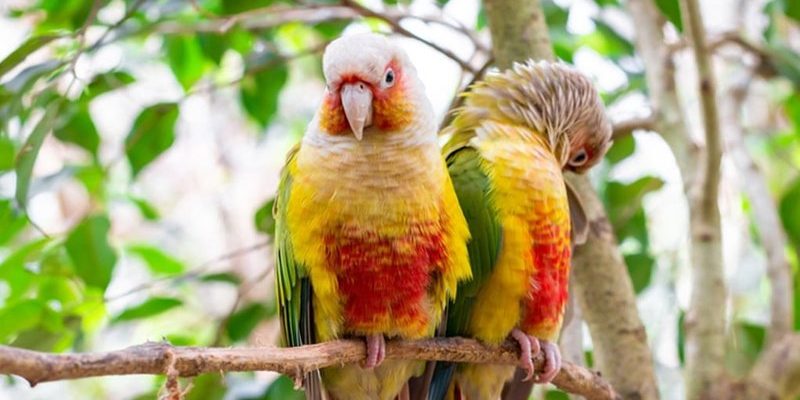
Think of conures as the colorful cousins in the parrot family. They hail from the lush forests of Central and South America, where they thrive in flocks, often bringing joy to anyone lucky enough to witness their antics. Imagine a group of these little clowns, chattering away in sync, as they navigate through their green paradise. Let’s dive into the evolution and history of these delightful birds, exploring how they’ve evolved and what makes them so special today.
What Are Conures?
Conures belong to the family of parrots known as Psittacidae. They usually sport bright feathers and are known for their playful behavior. In total, there are about 40 species of conures, all boasting unique colors and characteristics. Some popular types include the Sun Conure, the Green Cheek Conure, and the Blue Crowned Conure.
These birds are primarily found in warm regions, particularly in Central and South America. They inhabit rainforests, woodlands, and savannas, making them quite adaptable. Their playful nature and sociable behavior make conures fantastic companions, whether you’re looking for a feathered friend or just want to learn about them.
One fascinating aspect of conures is their vocal ability. They’re not shy about expressing themselves! You might hear them chatter, mimic sounds, or even sing. This vocalization is part of their social interactions, making them even more endearing. Their lively conversations can fill a space with energy and joy, capturing your heart in no time.
A Brief History of Parrots
To understand conures, we first need to glance at the history of parrots in general. Parrots have been around for about 50 million years. They’re believed to have originated in the Southern Hemisphere, particularly in regions that later became Australia and South America. Over time, they diversified into various species, adapting to different environments.
Conures emerged as one of the many branches of this family tree. Their evolutionary path took place in the lush forests of Central and South America, where they evolved to live in flocks. This social behavior isn’t just for fun; it helps protect against predators. Living in groups allows them to communicate and coordinate when foraging for food or alerting each other to danger.
As they evolved, conures developed vibrant colors and playful personalities, traits that would later endear them to humans. It’s like nature gifted them a personality that shines just as brightly as their feathers, making them hard to resist!
Conures in the Wild
In their natural habitat, conures thrive in social environments. They flock together, often forming strong bonds with other conures. You might picture a riot of colors in the trees, as these parrots flit back and forth, creating a lively atmosphere. Their diet consists of seeds, fruits, nuts, and even flowers. This diet is essential for their health and vibrant plumage.
Their social structure is fascinating. Conures often engage in playful activities, such as chasing each other or playing hide-and-seek among the branches. This playful behavior serves a purpose, helping them strengthen social bonds and keep their spirits high. It’s not just fun and games; it’s essential for their mental well-being.
However, conures do face threats in the wild, primarily due to habitat loss and the illegal pet trade. As forests are cleared for agriculture and urban development, their natural habitats shrink, leading to declining populations in certain areas. Conserving their natural ecosystems is vital, not just for conures but for the biodiversity of the regions they inhabit.
Domestication and the Rise of Conures as Pets
With their vibrant colors and charming personalities, it didn’t take long for conures to catch the attention of bird lovers. Initially, they were captured for their beauty and sold in pet markets. Over time, they became popular as pets due to their friendly demeanor and playful nature.
The rise of conures as pets has brought them into homes worldwide. Today, you can find a rainbow of conure species in households, each bringing its unique character and flair. Think of them as little characters that add joy to your everyday life. People love their antics, and conures often bond closely with their owners, often imitating sounds and words.
However, owning a conure comes with responsibilities. They need mental stimulation, social interaction, and proper care to thrive. Understanding their needs will not only improve their quality of life but also deepen the bond you share. A happy conure can bring so much joy, so investing time in building that relationship is well worth it.
Challenges Facing Conures Today
Despite their popularity, conures face several challenges today. One of the most significant threats is habitat loss. As humans continue to expand into their natural environments, conures lose the places they call home. This decline in habitat can lead to reduced food sources and increased stress for these birds.
Additionally, the illegal pet trade poses a risk. Many conures are captured from the wild and sold illegally. This not only threatens their populations in the wild but also raises ethical concerns about animal welfare. Supporting reputable breeders and adopting from shelters can help combat this issue.
Conservation efforts are crucial to sustaining conure populations. Various organizations work tirelessly to protect their habitats, promote responsible pet ownership, and raise awareness about the threats they face. You might be wondering how you can make a difference—consider supporting conservation efforts or adopting a conure from a shelter instead of buying one from a store.
The Future of Conures
Looking ahead, the future of conures depends on our actions today. Raising awareness about their plight and responsible ownership is vital. As more people recognize the environmental impact of pet trades and habitat destruction, we can work together to protect these beautiful birds.
Moreover, advances in breeding practices mean that conures can be raised in humane conditions. This ensures that they are healthy and better adjusted to life as pets. If you decide to welcome a conure into your home, doing your research and choosing ethically sourced birds is key.
Ultimately, conures are not just pets; they’re lively personalities that enrich our lives. By understanding their history and the challenges they face, we can better appreciate these beautiful creatures. Let’s hope for a future where conures flourish in both the wild and our homes.
In conclusion, the evolution and history of conures reflect not only their adaptability and resilience but also our role in ensuring their sustainability. So whether you’re thinking of adopting one or simply admire them from afar, remember that their story is still being written. Together, we can contribute to a hopeful and vibrant future for these charming parrots!

